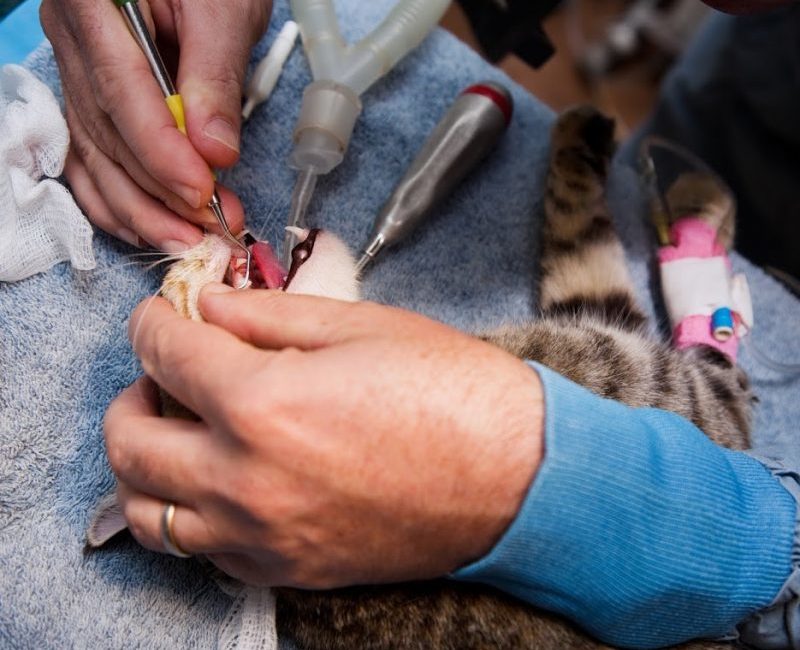Many clients come into our animal hospital knowing that their pet’s breath is smelly and the teeth are very dirty. The thought that a dental cleaning is in order has already crossed their mind, but clients seem surprised at the cost when we give them an estimate to “clean the teeth”.
I feel this surprise stems from not knowing what is involved in a dental cleaning appointment when we use the words “teeth cleaning”. Technically what we do is called a “Comprehensive Oral Health Assessment and Treatment” or COHAT for short.
Let’s start at the beginning. When the doctor and client have agreed to schedule a dental COHAT we will draw some blood from the patient to complete some pre-anesthetic testing. This allows us to evaluate the animal’s organ function and ensure the patient will be able to cope with the anesthetic drugs we use to anesthetize them. Animals must be put under full anesthetic in order to do a proper cleaning of the teeth. These tests are similar to what you would have done if you were having surgery yourself.
On the morning of the procedure, our registered veterinary technician will complete a pre-operative exam of the pet, including listening to the heart and measuring the heart rate, respiration rate, and temperature and familiarize themselves with the patient’s history. Any concerns or abnormalities are brought to the attention of the veterinarian. At this point, adjustments to the anesthetic protocol or a discussion with the owner about risks versus treatments may be made.
The patient will then be sedated so they will not feel anxious, and we will be able to reduce the amount of induction medication. An intravenous catheter is placed and the patient is connected to intravenous fluids for the duration of the procedure. This helps to maintain IV access in case of emergency and to keep the blood pressure normal.
The patient is then taken to our dental suite, where they are induced, and an endotracheal tube is placed in the trachea so the inhalant anesthesia can be delivered. This also protects the airway so water will not enter the lungs during the COHAT.
During anesthesia, we constantly monitor heart rate, respiration rate, blood pressure, oxygenation level, the temperature of the patient and the depth of anesthesia.
Once the patient is fully anesthetized, a registered veterinary technician or vet assistant will perform a dental prophylaxis where they will hand scale, use an ultrasonic scaler and polish the teeth, followed up with a fluoride treatment. Dental radiographs of all teeth are taken next. This process can take 1 to 1.5 hours to complete.
At this point, the doctor will examine the radiographic images, assess the crowns, gums and overall health of the mouth and then measure the periodontal depth to determine where the teeth may have damage or disease.
If all looks good in the mouth, the patient will be recovered, and they can go home later that afternoon with instructions on how to begin training their dog or cat to have its teeth brushed.
Our Comprehensive Oral Hygiene Assessment and Treatment can vary for dogs or cats. Keep in mind this does not include extractions. These are at an additional cost and often completed in a second visit to the hospital.
It is much better to maintain a healthy mouth through brushing, chewing and a dental COHAT annually or every other year than to wait until the pet has periodontal disease or other issues that require potential extractions.
Written by Darlene Cannon, RVT




